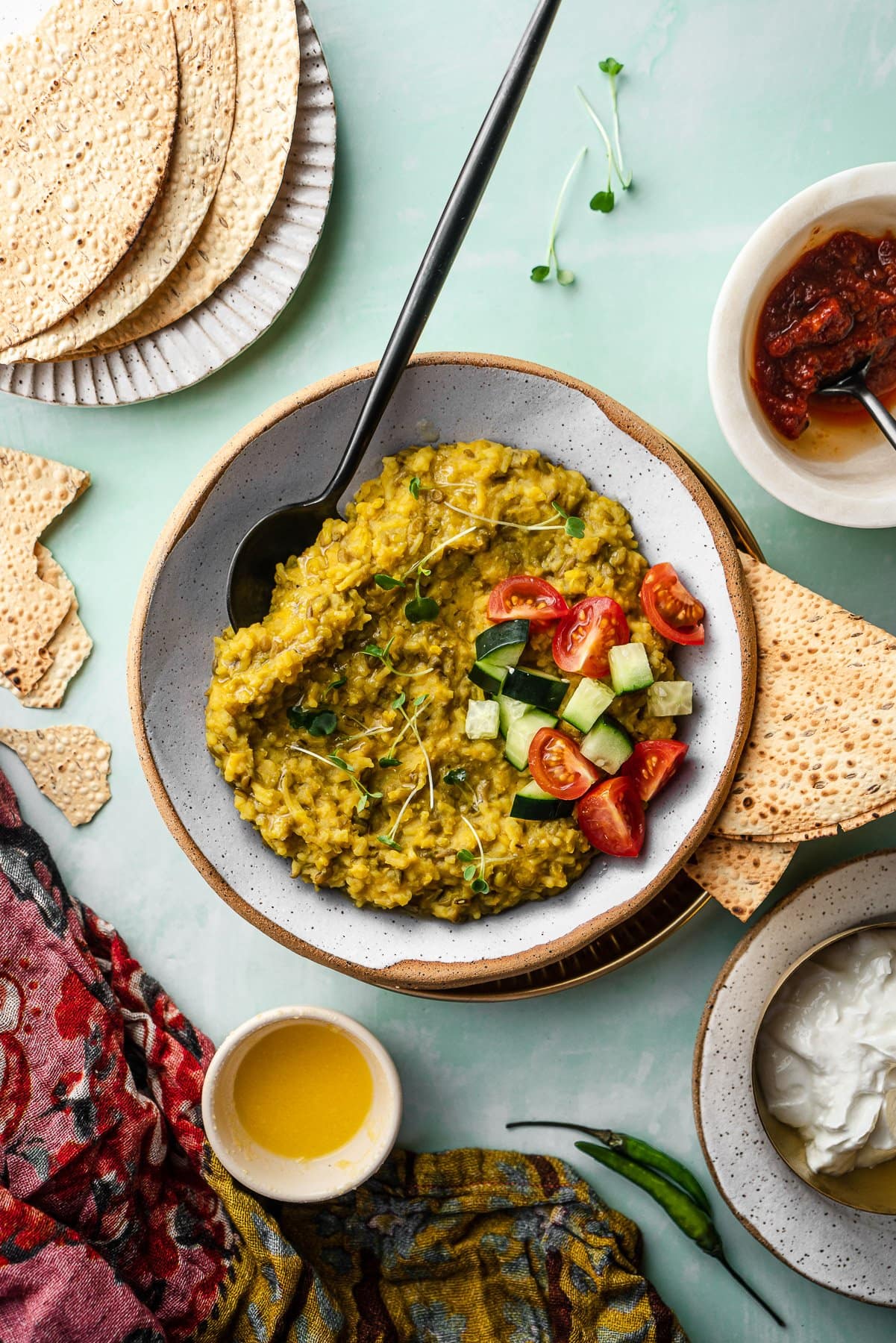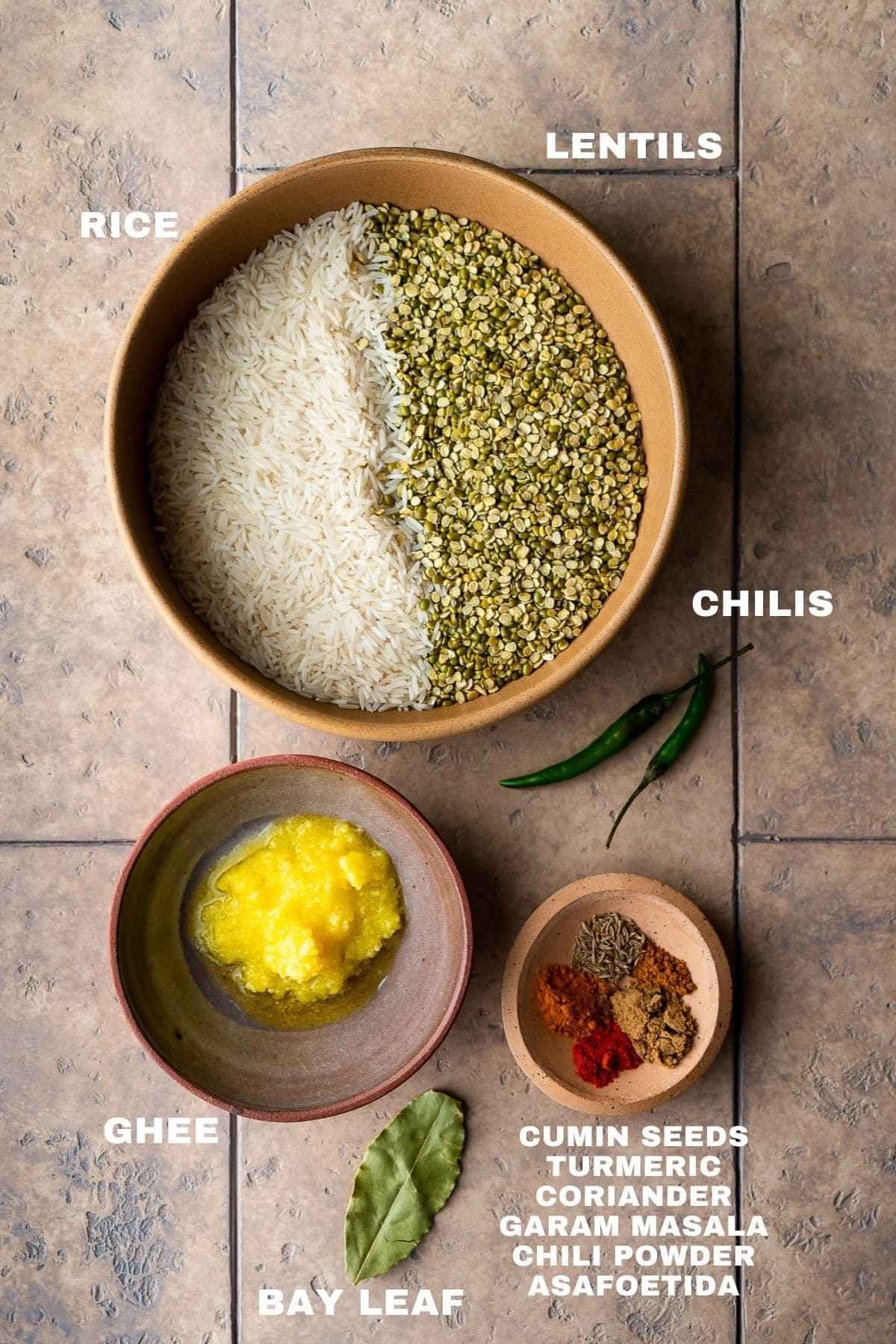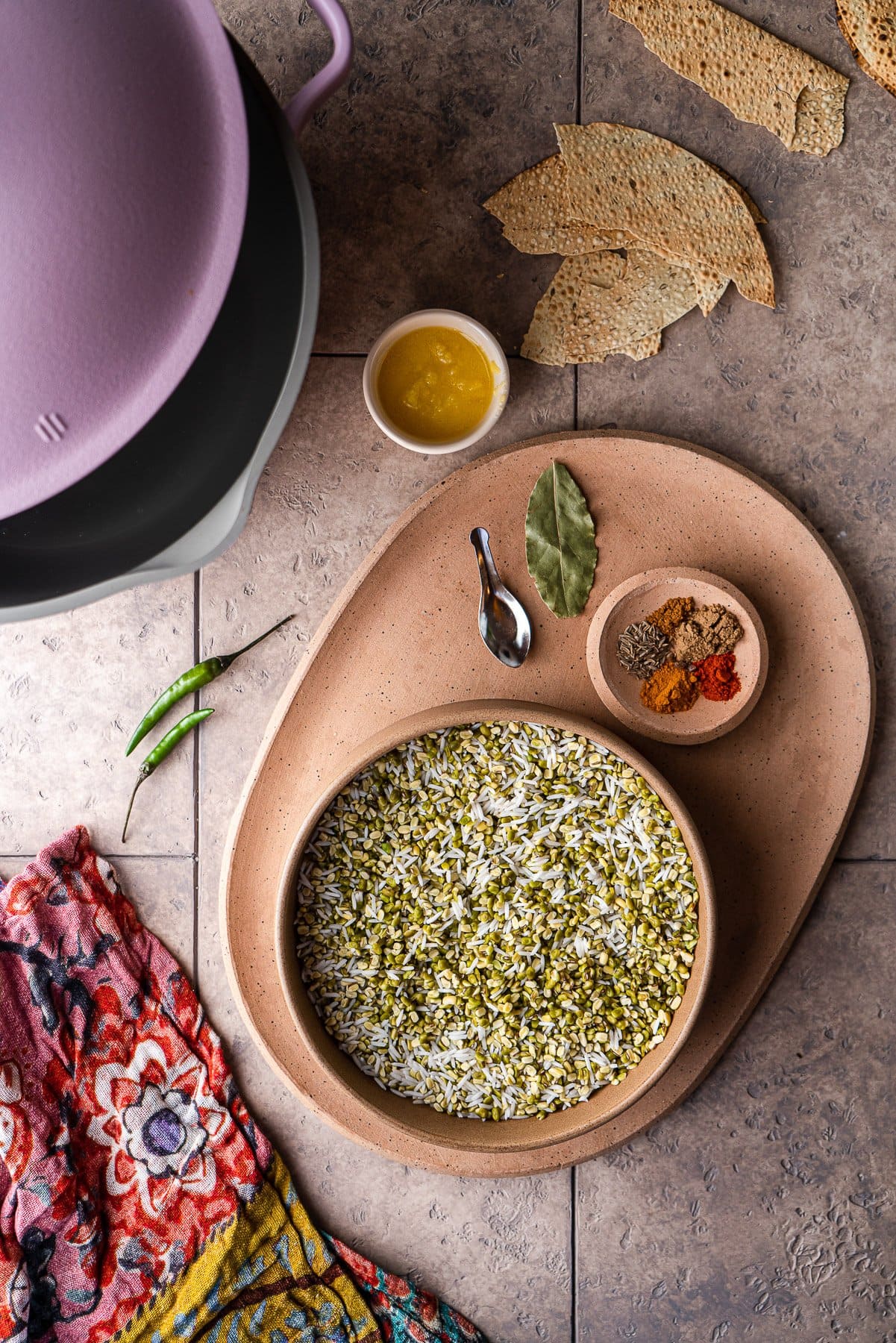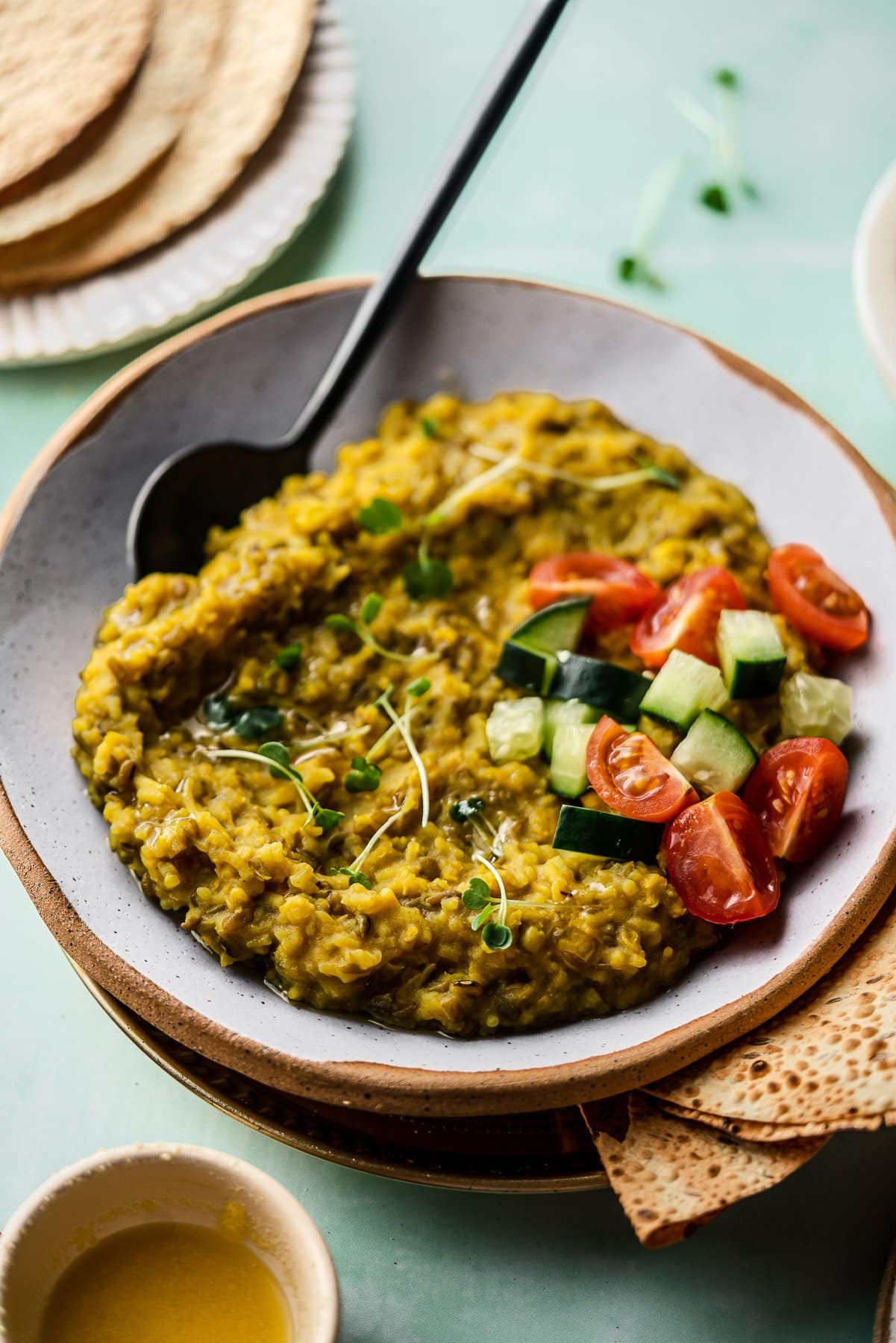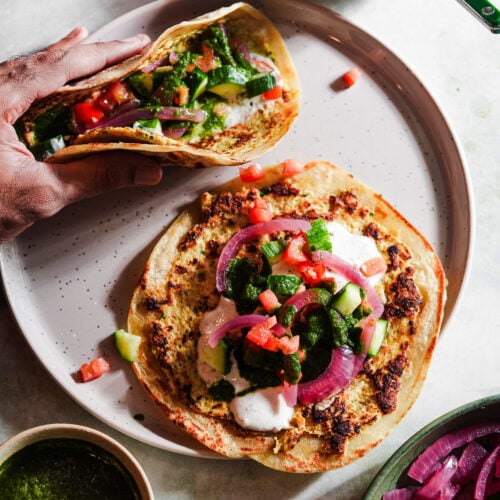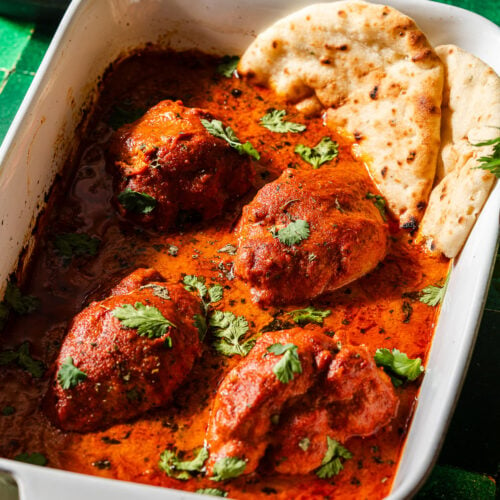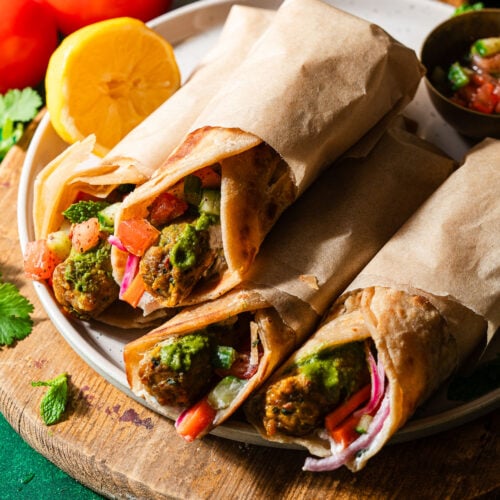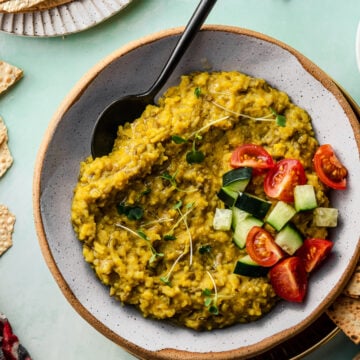You know how just about every country has that one dish that even the worst home cook can make? For the Indian diaspora, it’s Khichdi. In my Indian household, we enjoy Khichdi many times throughout the month. It was an easy dish for us to eat as young children - since it’s supposed to be gentle on the stomach - and then became a quick hearty dish for my mom to throw together on busy or even lazy days. We had it when we were sick along with haldi doodh or ginger honey water. We had it with a fat spoon of ghee on days when we needed comfort. It’s commonly compared as our version of porridge or congee. Now, it’s still the easiest dish I can make with ingredients I already have in my pantry and anything in my fridge… all within half an hour. What’s funny is that basically all of my friends that can’t cook but want to hang out will offer a quick Khichdi for dinner! It’s quite possibly the one fail proof dish that anyone from the Indian diaspora can claim to make super well.
What is Khichdi?
Khichdi, derived from the Sanskrit term khicca meaning “rice and legumes”, is simply a dish composed of basmati rice, moong dal, and often times spices. There are several variations of it, some including fresh vegetables or tadkas of tempered spices. It’s commonly served with achaar, dahi, papad, or an extra dollop of ghee. This quick and easy one pot dish has references that can be traced back over thousands of years ago. We see khichdi served most often when sick or to the eldery due to its nutritious value, easy digestion, and it can be made bland without spices. However, it can also be served for breakfast, lunch, or dinner! It’s most comparable to porridge, congee, and even koshary. Note: Sometimes, you’ll see khichdi (खिचड़ी) spelt like “kitchari”. This is an incorrect transliteration from Hindi to English, because our “d” sound rolls off the top of the mouth, producing something between a “d” and a “r”.
Ayurvedic Traditions in Khichdi
Something I want to touch on is that Khichdi is the preferred dish for those following Ayurvedic, self-healing diets. According to Ayurvedic traditions, moong dal can keep the Tridosha - Vata, Pitta, and Kapha - in balance and is regarded as a superfood. It’s said to balance the body by naturally cleansing or detoxifying the system. Khichdi is incredibly accessible in terms of finding the ingredients and price point. In terms of ingredients, it’s simply rice and moong dal which can be found at any grocery store. The rest of the ingredients like vegetables and spices are customizable. It can easily be made at home in whatever pot you have with anything that is in your pantry or fridge. So, if someone on the internet tries to sell you a $300 Ayurvedic Khichdi cleanse… run the other way. I promise you can DIY this one for a fraction of the cost.
Ingredients - Notes and Substitutions
As mentioned several times, I can’t emphasize enough how simple it is to make Khichdi! It’s a great dish to make with what’s in your pantry, and any fresh vegetables you may have in your fridge.
Lentils - For lentils, my mom has always used Green Split Moong Dal. Split moong beans is green gram that has been split but the skin isn’t removed which retains the green color. You can also use Moong Dal or Masoor Dal as substitutes.Rice - Use long grain rice, like basmati rice. However, short grain is also perfectly fine but may result in a mushier Khichdi.Ghee - Ghee is clarified butter with the milk solids removed. It makes Khichdi a “cleaner” dish, but you can substitute with unsalted butter or olive oil. The ghee adds a tonnn of flavor to khichdi, which can sometimes be bland depending on how it’s made. It also rounds out the dish with healthy fats.Spices - My mom uses whole cumin seeds, turmeric, ground coriander, garam masala, chili powder, and a pinch of asafoetida (hing). The asafoetida replaces garlic and onion, which those who follow Hindu or Jain diets do not consume. You can also use crushed black peppercorns, a bay leaf, and fenugreek seeds. Khichdi is sometimes made without spices to make it bland and easily digestible when sick.Chilis - Ultimately optional, but adds a bit of extra spice.Additional Mix-ins - If you want some additional fiber and vegetables, you can also toss in fresh green beans, corn, tomatoes, peas, etc
For toppings, I recommend microgreens, fresh vegetables, papad, achaar, ghee, and curd. It mostly depends on if you’re enjoying Khichdi for a quick lunch or if you’re sick. If you’re sick, you may want extra vegetables for nutrition and ghee for fat to keep you full.
How to make Khichdi
I think everyone’s favorite part about making Khichdi is how low effort it is! It’s a one pot recipe that can be made in any pot you have at home, a rice cooker, a pressure cooker, or an electric pressure cooker. The only thing you have to prep is washing the rice and lentils. Use equal amounts of rice to lentils, and wash it 4-7 times until the water runs clear. If you have some extra time on hand, it’s also great to soak the rice and lentils for up to 30 minutes because it softens them and cooks faster. If you’ve pre-soaked the rice and lentils, it only takes about 10 minutes for them to fully cook through. If you prefer the Khichdi to be less mushy, add only 2-3 cups of water and cook on a low to medium heat until the water has completely evaporated.
Variations
Just about every household has their own small variations on making Khichdi. Here’s a few to try out!
Lentils - As mentioned above, you don’t have to use Split Green Moong Dal. You can also give it a try with Masoor Dal (red lentils) or Yellow Moong Dal (split yellow moong beans with the husk removed).Mix-ins - Get some extra nutrition in by adding vegetables into the Khichdi as it cooks. Fresh vegetables are highly preferred, but the pre-packaged mixed vegetables you can get at a grocery store with green beans, corn, carrots, and peas is a great addition. You can also add fresh tomatoes.Spices - If you’re sick and can’t taste anything, you can skip all the spices and just add turmeric for the ant-inflammatory benefits! You can also add more spices, like black pepper, aamchur, etc. There are also readymade Khichdi masalas.Toppings - Adding fresh or fried vegetables is also great for making Khichdi a bit more hearty. I love microgreens, tomatoes, cucumbers, fried masala potatoes, and more. Papadum is also another favorite! I love breaking off pieces and scooping up the Khichdi as if it is chips and dips. Other classic toppings are achaar (pickled fruits and vegetables) and homemade dahi (curd).Tadka - Everyone loves a good tadka! Personally, I’d recommend ghee with garlic, chili powder, and maybe curry leaves to top.
Equipment
Khichdi can be made in just about anything you have at home! Whether it’s your grandma’s pot, a Dutch oven, a rice cooker, a pressure cooker, or an Instant Pot, it’ll all work. Personally, my mom and I love our Always Pot from Our Place for a quick meal. I also love my Staub 4qt Dutch Oven. And my mom is a big fan of her Instant Pot and the lentil / bean mode.
Instant Pot Instructions
To make Khichdi in an Instant Pot:
More Indian Main Dishes to try
Recipe
I’d love to know what you thought of this recipe! Don’t forget to leave a comment and ⭐️ star rating below! Thinking about making this recipe? Enter your email and I’ll send it straight to your inbox to save for later. Plus, get new recipe inspiration from me every week! By submitting this form, you consent to receive emails from Masala and Chai.

